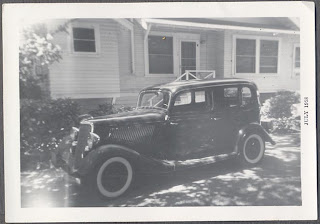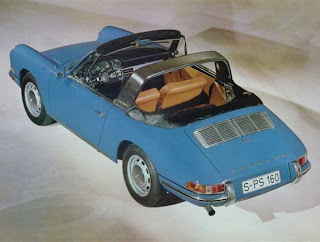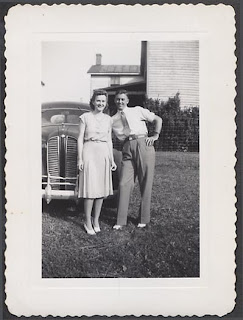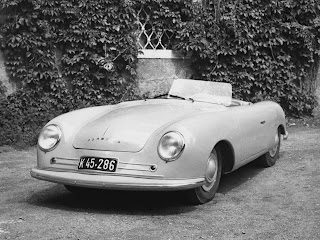
Hi folks -- what follows is a section from my book The Automobile and American Life concerning the Chevrolet Corvair. The more I learn, the more my views shift. History is never set in stone. And in the case of the Corvair, I took the easy way out initially, following well-worn interpretations. When you read history, beware. You need to question assertions, not only because some are based on deception and lies, but also a few like mine here is derived from taking the path of least resistance. Dig deep! It amy well be that the Corvair was "assassinated" during the second half of the 1960s. It may be that had the Corvair succeeded, the entire American auto industry would have taken a different direction at a critical time in its history, thus avoiding the decline that it has experienced. Yes, the Corvair had quality problems, but it was built in an era when quality was rarely considered. It was fun to drive, and economical. So in the weeks ahead I will be addressing the Corvair story with new information and at the same time exploring the context of mid-to-late 1960s America.
"And as much as Ralph Nader attacked GM for its Corvair in his
Unsafe at Any Speed, he also broadened his critique to include the engineers who worked in
Detroit. Perhaps more than anyone else since Thorsten Veblen, Ralph Nader focused on the shortcomings of engineers and in the flawed institutional arrangements that existed where they worked. Published in 1965,
Unsafe at Any Speed accused automotive engineers of disregarding ethical principles and ignoring public safety. The publicity given to his critical analysis, and Nader�s own crusade spurred the consumer movement and the work of trial lawyers, both of which have led to powerful social changes since the early 1960s.
At the heart of Nader�s early work was his attack on the safety of General Motor�s Corvair. In Nader�s opinion, �the Corvair was tragedy not a blunder.� The tragedy was a consequence of engineers who cut corners to shave costs. This was a common occurrence in the auto industry and indeed all manufacturing, but with the Corvair it happened in a big way. Fatefully, during the late 1950s, General Motors, under the leadership of engineer Ed Cole, developed the Corvair, in part the consequence of the unexpected success of the Volkswagen Beetle, but also the result of two decades of engineers� fascination with the concept of a vehicle with its engine placed in the rear. While the Corvair had its supporters who argued that the car got a raw deal by consumer advocates, it was generally regarded as one of a number of post-1960 Detroitproducts that were egregiously unsafe and based on flawed designs. It was hubris, economics, and blind obedience on the part of engineers working in a flawed institutional environment that led to the Corvair tragedy. The Corvair was the wrong car at the wrong time in American history.
The tragedy can be translated into human terms. For example, in August 1961, Mrs. Rose Pierini of Santa Barbara lost control of her new Corvair while driving 35 mph. The car flipped on its top, and Mrs. Pierini was trapped underneath, blood gushing from a dismembered arm that was lying in the street. She would later receive $70,000 after being worn down by GM attorneys and deciding not to go any further with her lawsuit. In a similar fashion, GM Truck and Bus Vice-President Calvin J. Werner, living in Dayton, Ohio, purchased a Corvair for his daughter. She was afraid to drive the car, but her brother was not. That brother would also die in a low-speed accident, the consequence of the vehicle�s inherent instability. The Werner family�s plight is reflective of just how little the public, and indeed even GM insiders, knew about the inherent design flaws of the Corvair during the first few years after its introduction. There was a conspiracy of silence about unsafe vehicles before the era of recalls.
Indeed, during the 1960 to 1964 model years, the Corvair could go out of control at 22 mph with a turning radius of 50 degrees and front rear and tire pressures of 26 psi. Ford engineers quickly discovered this fact, when in 1959 two of them lost control of an early Corvair on the Dearborn, Michigantest track.
The tragedy began with conception and development of the Corvair by leading GM engineers � Edward Cole, Harry Barr, Robert Schilling, Kai Hansen, and Frank Winchell. Cole, an long-time devotee of rear-engined cars, saw a market as early as 1955 for a small, compact car, and in 1956, after rising to the head of the Chevrolet Division, put his finest engineering talent to work on the project. By 1957, the program was given a full go ahead, even though executives knew that several design obstacles had yet to be overcome.
As early as 1953, GM executives were aware of the main problem that was associated later with the Corvairs. In that year, one of the GM�s brightest engineers, Maurice Olley, wrote a technical paper, �European Postwar Cars,� that contained a sharp critique of rear-engined automobiles with swing-axle suspension systems. He called such vehicles �a poor bargain, at least in the form in which they are at present built,� adding that they could not handle safely in wind even at moderate speeds, despite the tire pressure differential between front and rear. Olley went further, depicting the �forward fuel tank as a collision risk as is the mass of engine in the rear.�
Despite these warnings, GM went ahead, with its primary aim being a target rate of return on investment. The 1960 Corvair came off the assembly line at two-thirds the weight of a standard Chevrolet, with a selling price $200 lower than standard models, but to keep costs down and profits high, compromises had to be made. Suspension stabilizers were left off, and a peculiar kind of swing axle was used that created �oversteer� or instability when deviating from a straight path. To compensate for oversteer, Corvair engineers recommended that owners maintain critical tire pressure differentials between front and rear wheels. This whole design, confessed one GM engineer, was based on lower cost, ease of assembly, ease of service, simplicity of design, and the desire to create a soft ride.
The biggest problem with the Corvair was that GM was slow to react to a known problem � the large number of accidents due to loss of control. The company was silent when questioned on the matter. Until Nader gained a wide public audience, GM did little or nothing. The moral of the story is that the corporations of the early 1960s only faced the consequences of their actions when threatened with government sanctions, expensive litigation and court judgments, or public hostility on a massive scale. Indeed, it took GM four years and 1,124,076 Corvairs to correct the problem.
The convergence of forces for change took the industry by total surprise in the months immediately after the 1964 presidential election. The Johnson administration's willingness to sponsor social reform legislation, the appearance on the
Washingtonscene of Ralph Nader, Abraham Ribicoff, and the American Trial Lawyers' Association are all part of the story. Significantly, a 1966 landmark case,
Larsen vs. General Motors, marked a new trend in automobile liability decisions.
Manufacturers were now held responsible for inadequate designs that resulted in injuries due to a collision. Other cases followed
Larsen, but it was this case, involving the dangerous design of the Corvair steering column, that made possible an additional recourse for consumers. With agencies like the Department of Transportation often influenced by industry, the judiciary was a second route to ultimately enhancing automobile safety."


















































